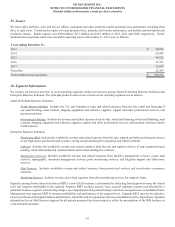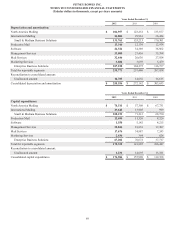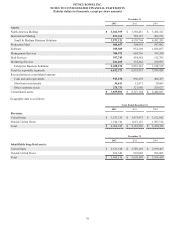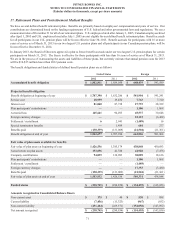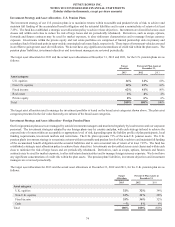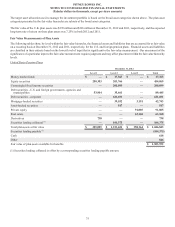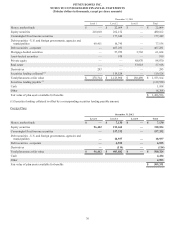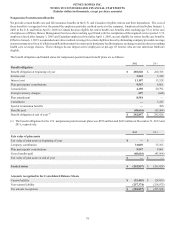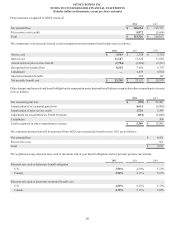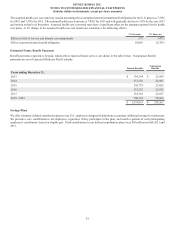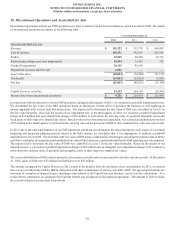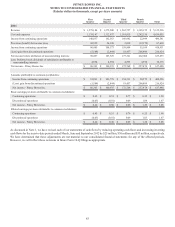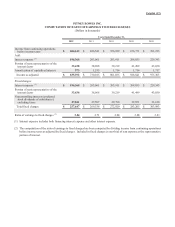Pitney Bowes 2012 Annual Report Download - page 95
Download and view the complete annual report
Please find page 95 of the 2012 Pitney Bowes annual report below. You can navigate through the pages in the report by either clicking on the pages listed below, or by using the keyword search tool below to find specific information within the annual report.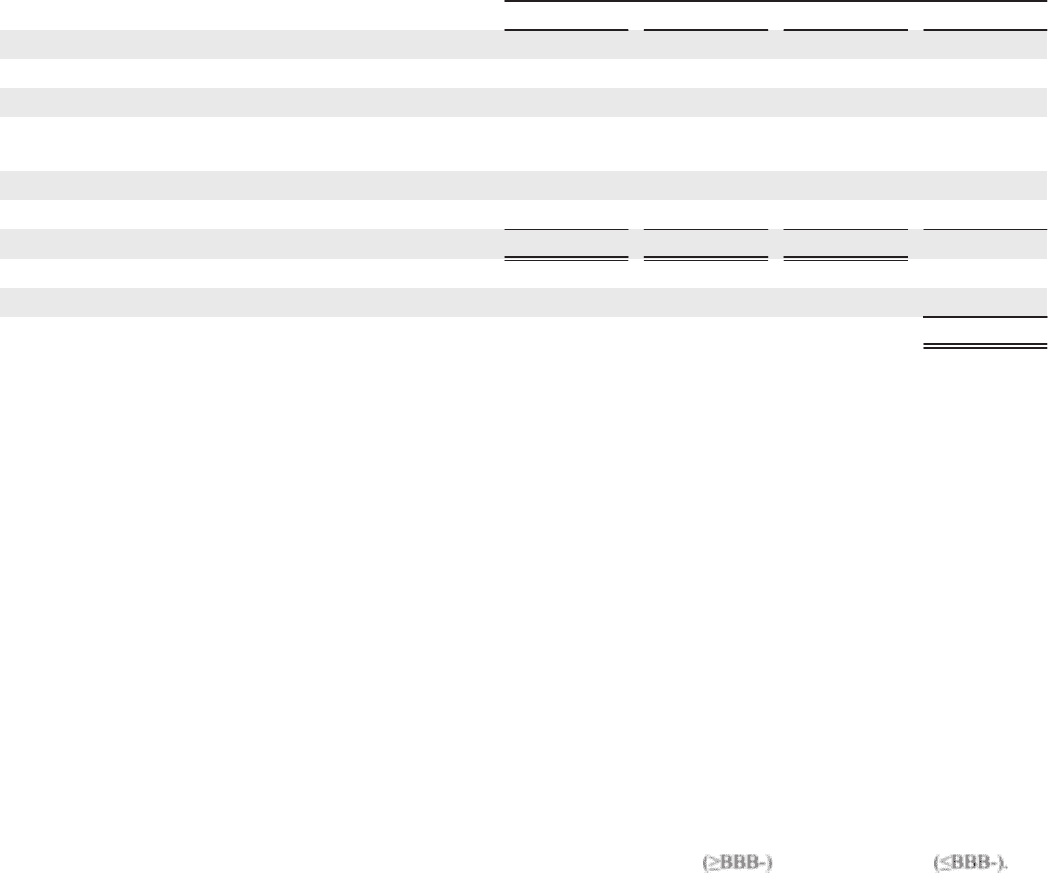
PITNEY BOWES INC.
NOTES TO CONSOLIDATED FINANCIAL STATEMENTS
(Tabular dollars in thousands, except per share amounts)
77
December 31, 2011
Level 1 Level 2 Level 3 Total
Money market funds $ — $ 7,236 $ — $ 7,236
Equity securities 113,257 150,787 — 264,044
Commingled fixed income securities — 127,611 — 127,611
Debt securities - U.S. and foreign governments, agencies and
municipalities — 13,616 — 13,616
Debt securities - corporate — 7,150 — 7,150
Derivatives — 382 — 382
Total plan assets at fair value $ 113,257 $ 306,782 $ — $ 420,039
Cash 16,424
Other 2,385
Fair value of plan assets available for benefits $ 438,848
The following information relates to our classification of investments into the fair value hierarchy:
• Money Market Funds: Money market funds typically invest in government securities, certificates of deposit, commercial paper of
companies and other highly liquid, low-risk securities. Money market funds are principally used for overnight deposits. The money
market funds are classified as Level 2 since they are not actively traded on an exchange.
• Equity Securities: Equity securities include U.S. and foreign common stock, American Depository Receipts, preferred stock and
commingled funds. Equity securities classified as Level 1 are valued using active, high volume trades for identical securities. Equity
securities classified as Level 2 represent those not listed on an exchange in an active market. These securities are valued based on
quoted market prices of similar securities.
• Commingled Fixed Income Securities: Mutual funds that invest in a variety of fixed income securities including securities of the
U.S. government and its agencies, corporate debt, mortgage-backed securities and asset-backed securities. Value of the funds is
based on the net asset value (NAV) per unit as reported by the fund manager. NAV is based on the market value of the underlying
investments owned by each fund, minus its liabilities, divided by the number of shares outstanding. Commingled fixed income
securities are not listed on an active exchange and are classified as Level 2.
• Debt Securities - U.S. and Foreign Governments, Agencies and Municipalities: Government securities include treasury notes and
bonds, foreign government issues, U.S. government sponsored agency debt and commingled funds. Municipal debt securities include
general obligation securities and revenue-backed securities. Debt securities classified as Level 1 are valued using active, high volume
trades for identical securities. Debt securities classified as Level 2 are valued through benchmarking model derived prices to quoted
market prices and trade data for identical or comparable securities.
• Corporate Debt Securities: Investments are comprised of both investment grade debt and high-yield debt The
fair value of corporate debt securities is valued using recently executed transactions, market price quotations where observable, or
bond spreads. The spread data used are for the same maturity as the security. These securities are classified as Level 2.
• Mortgage-Backed Securities (MBS): Investments are comprised of agency-backed MBS, non-agency MBS, collateralized mortgage
obligations, commercial MBS, and commingled funds. These securities are valued based on external pricing indices. When external
index pricing is not observable, MBS are valued based on external price/spread data. If neither pricing method is available, broker
quotes are utilized. When inputs are observable and supported by an active market, MBS are classified as Level 2 and when inputs
are unobservable, MBS are classified as Level 3.
• Asset-Backed Securities (ABS): Investments are primarily comprised of credit card receivables, auto loan receivables, student loan
receivables, and Small Business Administration loans. These securities are valued based on external pricing indices or external price/
spread data and are classified as Level 2.
• Private Equity: Investments are comprised of units in fund-of-fund investment vehicles. Fund-of-funds consist of various private
equity investments and are used in an effort to gain greater diversification. The investments are valued in accordance with the most
appropriate valuation techniques, and are classified as Level 3 due to the unobservable inputs used to determine a fair value.
• Real Estate: Investments include units in open-ended commingled real estate funds. Properties that comprise these funds are valued
in accordance with the most appropriate valuation techniques, and are classified as Level 3 due to the unobservable inputs used to
determine a fair value.


